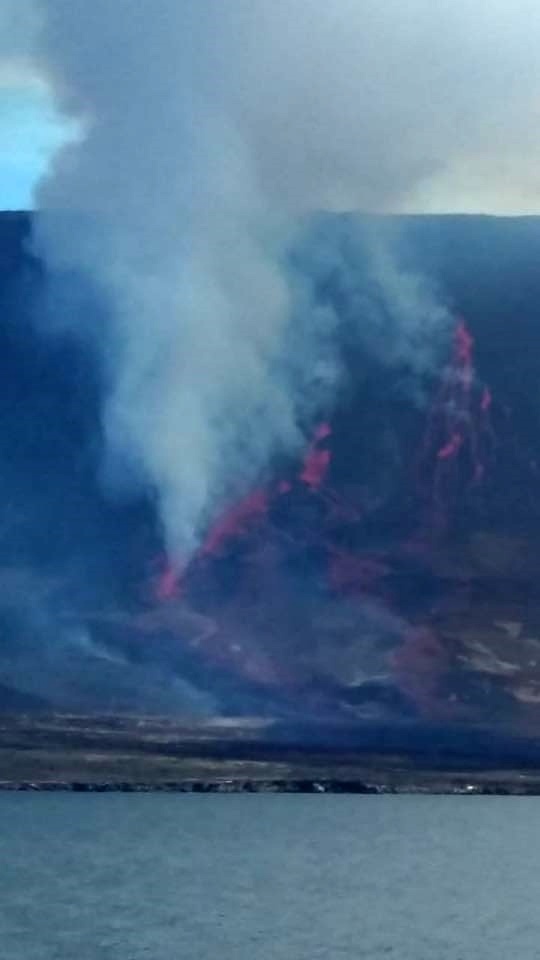There are currently many volcanoes erupting around the world. Here the latest updates.
Eruption of Fernandina Island’s volcano in the Galapagos archipelago on June 16, 2018
On June 16, nine earthquakes hit off Fernandina Island in the Galapagos archipelago, starting at 8:37 am. The largest quake of this seismic swarm, a M4.1, occurred at 9:22 am.
The seismic unrest resulted in the eruption of island’s volcano between 11h and 11h15, as confirmed by a boat passing by. The eruption is located on the NNE side of the volcano and is currently characterized by lava flows, and 2-3 km high gas plumes.
Lava flowing in the sea generates a powerful plume of steam and gas.

Eruption of Sakurajima volcano in Japan on June 16, 2018
The Sakurajima Minamidake Crater erupted strongly on Kyushu Island, Japan on June 16 at 7:19 am local time. It was accompanied by an ash plume rising to 4,700 meters above the crater, before drifting to the west.
Pyroclastic flows have been observed down the southwest flank and significant ash falls are reported on Kagoshima.

The alert level is maintained at 3 / do not approach the volcano, in force since February 5, 2016.
Klyuchevskoy volcanic eruption on June 15, 2018
Klyuchevskoy volcano erupted on June 15 at 21:38 UTC ejecting a plume of ash more than 6,000 meters asl., which then drifted southwest of the volcano.
Moderate activity continues, justifying an orange aviation code, the risk of ash explosions always occurring.
Kilauea volcanic eruption continues
At Kilauea, the eruption continues in the East Rift Zone, where lava fountains rise between 55 and 60 meters on crack 8, surrounded by a 51-meter spatter and tephra cone at its highest point. Fissures 16 and 18 continue to seep out of the lava. Fisures 9 and 24 appear hotter, and degass strongly.
The lava flows into a well-established channel towards the ocean at Kapoho, producing “laze” plumes, loaded with hydrochloric acid and volcanic particles.
Seismicity is rising at the top, where several earthquakes have been felt, some of magnitude 3.
The collapse of the edges and walls of Halema’uma’u continues in response to the current subsidence of the summit.
According to the meteorological agency, the epicenter of the quake was located in the northern part of the Osaka prefecture at the depth of 10 kilometers (6.2 miles).
The agency added that the tremors registered in the city of Osaka were measured 4 on Japan’s scale of 0 to 7.
The meteorologists claimed that there was no tsunami risk because of the quake.
Japanese government spokesman announced that there was no major damage reported after the earthquake, Reuters said.
A strong earthquake shook the city of Osaka in western Japan on Monday morning, causing scattered damage including broken glass and partial building collapses. There were no immediate reports of injuries.
The quake with a preliminary magnitude of 5.9 struck around 8 a.m. about 10 kilometers (6 miles) underground, the Japan Meteorological Agency said. The strongest shaking was in an area north of Osaka city, the agency said.
The Japanese government had not received reports of major damage as of 8:30 a.m., spokesman Yoshihide Suga told reporters. Television images showed goods scattered on the floor of shops and building debris in streets.
The morning commute was disrupted as train and subway service in the Osaka area including the bullet train were suspended to check for damage to equipment.
No comments:
Post a Comment